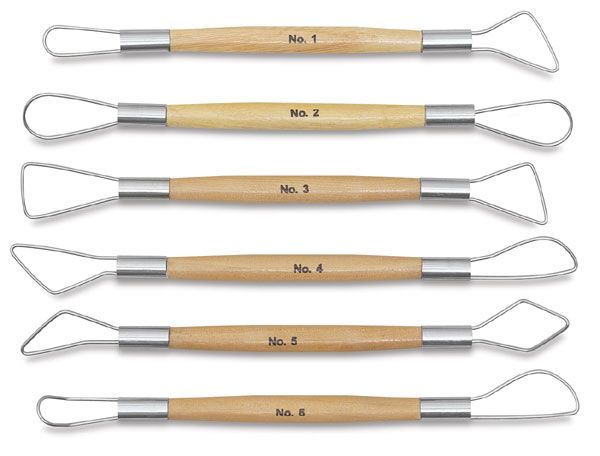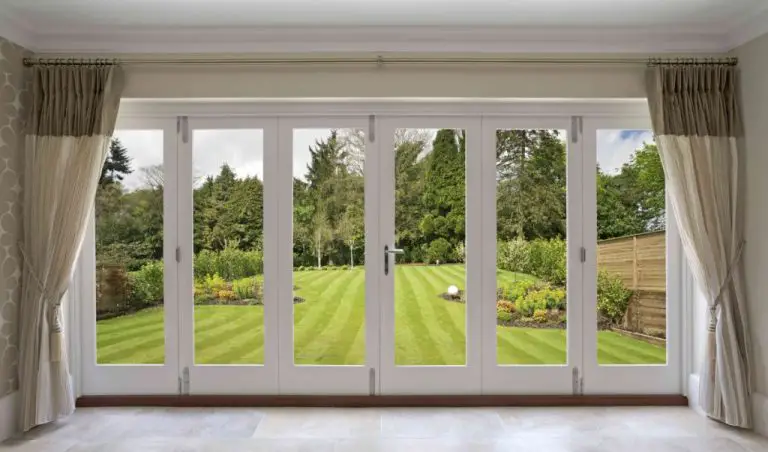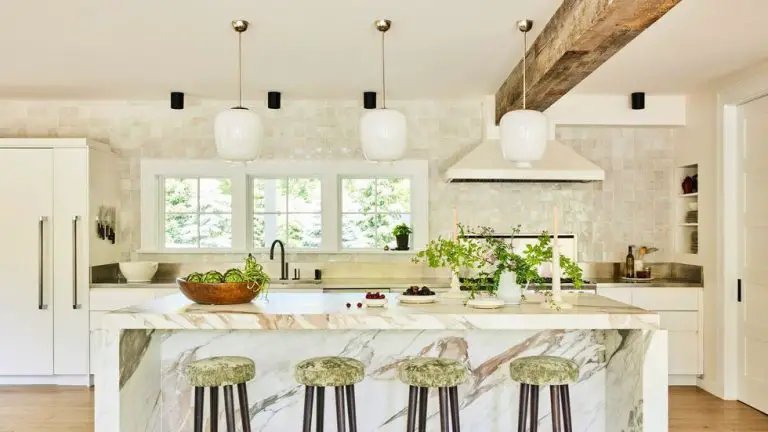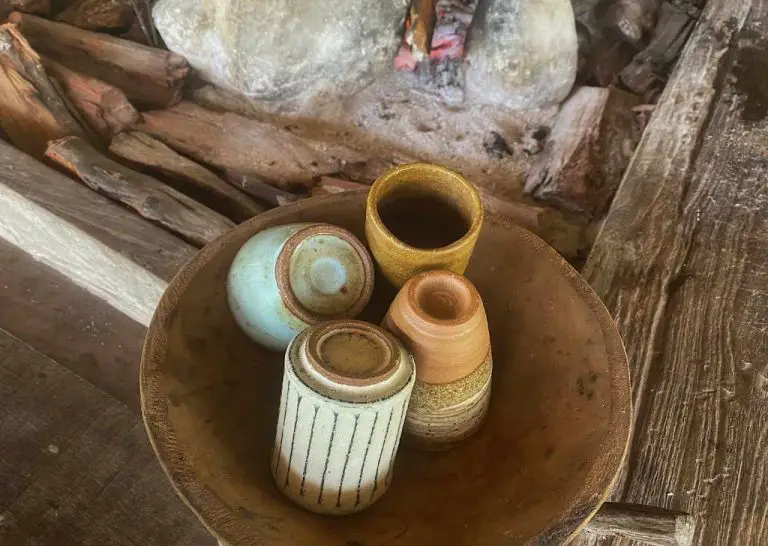Can You Use Plaster Of Paris For Wedging Table?
What is Plaster of Paris?
Plaster of Paris is a building material made of gypsum, a naturally occurring mineral mined from sedimentary rock deposits around the world. It is created by heating gypsum to about 300 degrees Fahrenheit, which drives off some of the water molecules in its chemical structure.
This process creates calcium sulfate hemihydrate, which has the useful property of hardening again when mixed with water. When wet plaster is mixed, the hemihydrate molecules reabsorb water and turn back into gypsum crystals in an interlocking matrix. This gives wet plaster a paste-like consistency that allows it to be molded and then hardens into a solid.
The key properties that make plaster of Paris useful for arts, crafts, and construction include:
- It can be easily molded when wet.
- It sets and hardens quickly, usually within 10-30 minutes.
- It forms a solid, durable finish when fully set.
- It bonds well to wood, metal, and masonry.
- It can be sanded, carved, and drilled when dry.
With these versatile characteristics, plaster of Paris is an accessible material for a wide variety of applications.
Advantages of Using Plaster for Wedging
Plaster of Paris offers several benefits when used for wedging wobbly tables and furniture. Some of the main advantages include:
Sets Quickly – One of the best aspects of plaster is that it sets and hardens rapidly, usually within 30 minutes. This allows you to wedge the table and get it stable again quickly.
Sands Easily – Once fully cured, excess plaster can be easily sanded down for a smooth finish. This makes clean up straightforward.
Cost Effective – Plaster of Paris is an inexpensive material available at most hardware stores. Wedging a wobbly table this way is very affordable.
Readily Available – As a common household material, plaster can be easily purchased or may already be on hand for repairs. You likely won’t have to hunt down any specialty products to do this simple table fix.
Disadvantages of Plaster for Wedging
While plaster of Paris can be an affordable and accessible option for wedging wobbly tables, there are some downsides to be aware of before using it.
One of the main disadvantages is that plaster becomes quite brittle and rigid once fully set. This means the bond can be prone to cracking or crumbling over time, especially if the table is moved or subjected to vibrations. The inflexibility of cured plaster also provides less shock absorption compared to more resilient materials.
Additionally, plaster is fairly heavy, especially in the quantities often required for wedging. This added weight may put more strain on the table components and joints. The density and messiness of wet plaster mixture can also make application tricky for DIYers.
Overall, the brittle fully-cured state, heaviness when used in large amounts, and general messiness to work with are the key downsides to keep in mind if using plaster for wedging tables or furniture.
How to Use Plaster for Table Wedging
Using plaster of Paris to level wobbly tables is a relatively straightforward process. Here are some tips for mixing and applying plaster to stabilize table legs:
Mixing the plaster:
- Start with a ratio of 2 parts plaster to 1 part water. Adjust as needed to achieve a thick, doughy consistency.
- Only mix as much plaster as you can use in 5-10 minutes. It will begin setting up quickly.
- Stir vigorously to fully incorporate powder into the water and avoid lumps.
Application:
- Wedge shims under the unsteady table legs to lift them slightly.
- Form plaster into a wedge shape under each table leg, pressing firmly to fill any gaps.
- Aim for wedges that are 1-2 inches thick for adequate support.
- Use a damp cloth to smooth the plaster for a neat appearance.
Curing:
- Allow the plaster to cure fully for 24-48 hours before removing shims.
- Do not place heavy objects on the table during curing.
- Plaster will reach full strength in 5-7 days.
Common Mistakes
When using plaster of Paris for wedging tables, there are some common mistakes to avoid:
Adding too much water – It’s important not to add too much water to the plaster mix, as this can weaken the compound and prevent it from curing properly. Using the right plaster to water ratio is key for maximum strength.
Not sanding properly – Once dried, the plaster wedge will need to be sanded smooth before painting or finishing the table. Not sanding enough can leave an uneven surface. Be sure to sand until completely smooth.
Rushing the curing process – Plaster can take 24-48 hours to fully cure and harden. Rushing this process by sanding or manipulating the wedge too soon can damage or weaken the plaster before it has fully set. Patience is key for proper curing.
Alternative Options
While plaster of Paris can be an effective and inexpensive option for wedging tables, there are some alternatives that may better suit certain situations:
Wooden Wedges
Wooden wedges are a classic choice for wedging furniture. They can be easily cut and shaped as needed to provide a custom fit for wedging tables. Wood wedges are reusable and long-lasting. However, they may not grip surfaces as tightly as plaster or shims.
Plastic Shims
Plastic shims are inexpensive and readily available at most hardware stores. They are easy to insert and remove as needed. Shims come in a variety of sizes for fine adjustments. The main downside is that they may compress over time and lose effectiveness.
Specialty Leveling Systems
For professional applications or frequently moved furniture, consider a specialty leveling system. These use threaded rods, adjustable feet or custom wedges that attach to the furniture’s base. While more complex, these systems allow for precision adjustment and easy re-leveling when needed.
Which Tables Work Best?
Not all types of tables are suitable candidates for DIY plaster wedging. The ideal table to use plaster on will have the following characteristics:
-
Wooden legs – Plaster bonds best to porous materials like wood rather than metal or plastic. Wooden legs will grip the plaster tightly.
-
Square or rectangular shape – Round or oval tables won’t have large flat surfaces for the plaster to adhere to.
-
Solid tabletop – The underside of the table should be completely flat and solid. Tables with an apron or crossbeams won’t hold plaster as effectively.
-
Standard height – Opt for a table around 30 inches tall. This allows easy access for plaster application and leveling under the table.
-
Unfinished surface – An untreated wood surface gives the plaster texture to grip onto. Avoid tables with laminate or varnished legs.
Styles of table to avoid for plaster wedging include:
-
Glass, metal or stone tops – These non-porous materials won’t bond with the plaster.
-
Pedestal tables – Without four legs, the plaster can’t properly wedge and level the table.
-
Folding tables – The legs are too unstable and narrow for plaster application.
-
Bar height tables – It will be very difficult to reach under a tall bar table to apply the plaster.
Cautions and Safety
When working with plaster of Paris, it’s important to take precautions to protect yourself. Here are some key safety tips:
-
Wear proper PPE like safety goggles, gloves, and a dust mask or respirator. Plaster can irritate eyes and skin, and breathing the dust can cause respiratory irritation.
-
Work in a well-ventilated area. Open windows or use fans to keep dust levels down.
-
Avoid breathing in plaster dust when sanding or smoothing set plaster. Use wet sanding methods or attach a vacuum sander to contain dust.
-
Clean up thoroughly after working with plaster. Use a wet mop to clean floors and wipe down counters and tools.
-
Wash exposed skin immediately after working with plaster to avoid irritation.
-
Store leftover plaster away from heat and moisture which can cause it to harden.
Taking basic precautions will help ensure you stay safe and healthy while using plaster of Paris for projects.
How Long Does it Last?
Plaster of Paris wedges can last for years with proper care and maintenance. The plaster itself is quite durable, especially compared to wedges made of paper or felt. Here are some factors that determine the lifespan of plaster wedges:
– Table usage – Tables that are used frequently will require re-wedging more often as the vibrations can cause wedges to settle or loosen over time.
– Wedge thickness – Thicker wedges will be more rigid and less prone to compressing or crumbling.
– Environment – Very dry conditions can cause plaster to crack or dry out faster. Humid conditions can soften the plaster over time.
– Maintenance – Checking wedges every few months and replacing ones that are damaged or worn will extend the life. Light sanding or filing any uneven spots helps too.
– Quality of plaster – Industrial grade plaster lasts longer than basic craft plaster. Using proper curing times and mixing ratios also produces stronger, longer-lasting wedges.
Overall, well-made plaster wedges that are regularly inspected and maintained can easily last 2-5 years or longer under normal household use before needing to be replaced.
When to Call a Professional
While using plaster of Paris for wedging tables can be a DIY project, there are some situations where you may want to call in a professional:
Large uneven floors – If you have a very large floor area that needs leveling, or extreme unevenness, it may be best to call in a flooring specialist. Professionals have the tools and expertise to efficiently level large areas.
Heavy/valuable furniture – Precariously wedged furniture, especially heavy antique or wooden pieces, can be easily damaged if they shift or collapse. A professional can provide extra support and care.
If unsure about process – If you don’t feel fully confident about the wedging process, or have any doubts about safely lifting and supporting furniture, call for help. Professionals regularly provide this service.
In general, if the project scope seems too large or complex, don’t risk damaging your floors or furniture – call a professional for assistance wedging tables or other furniture pieces.




